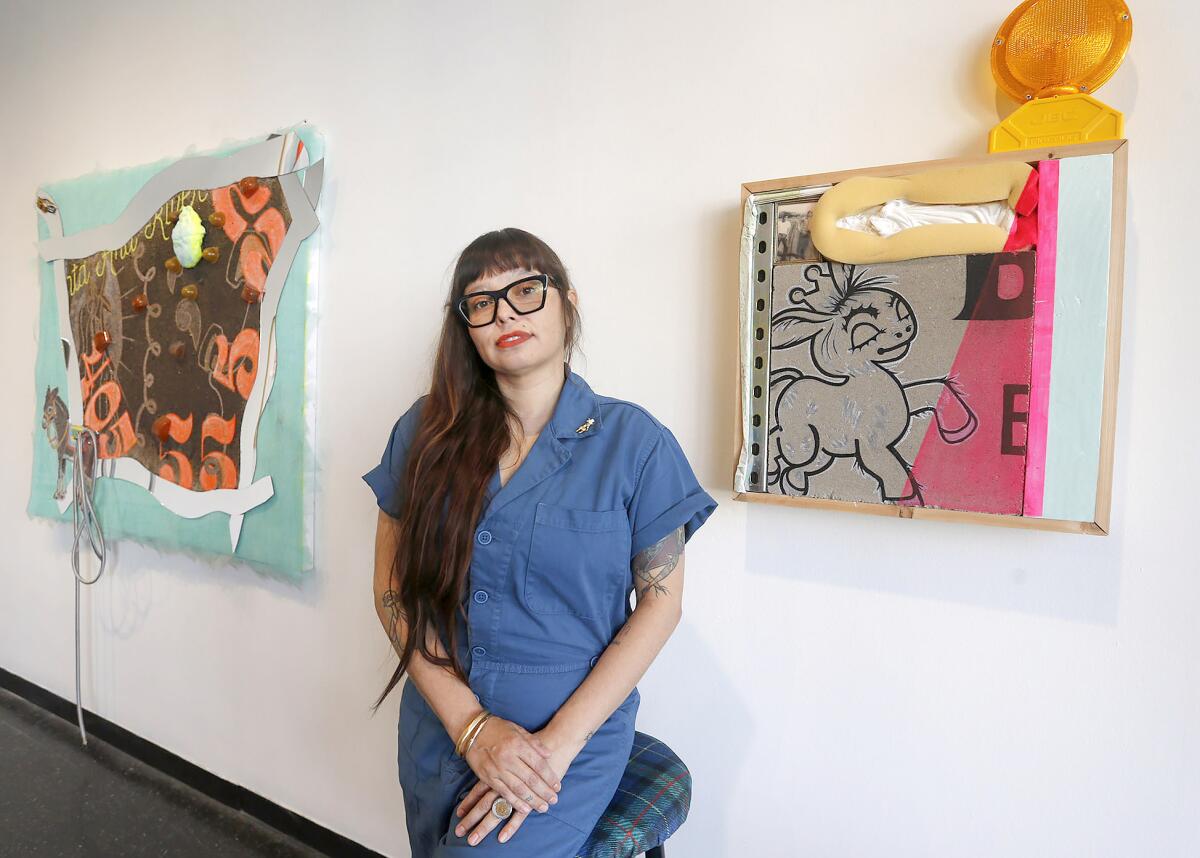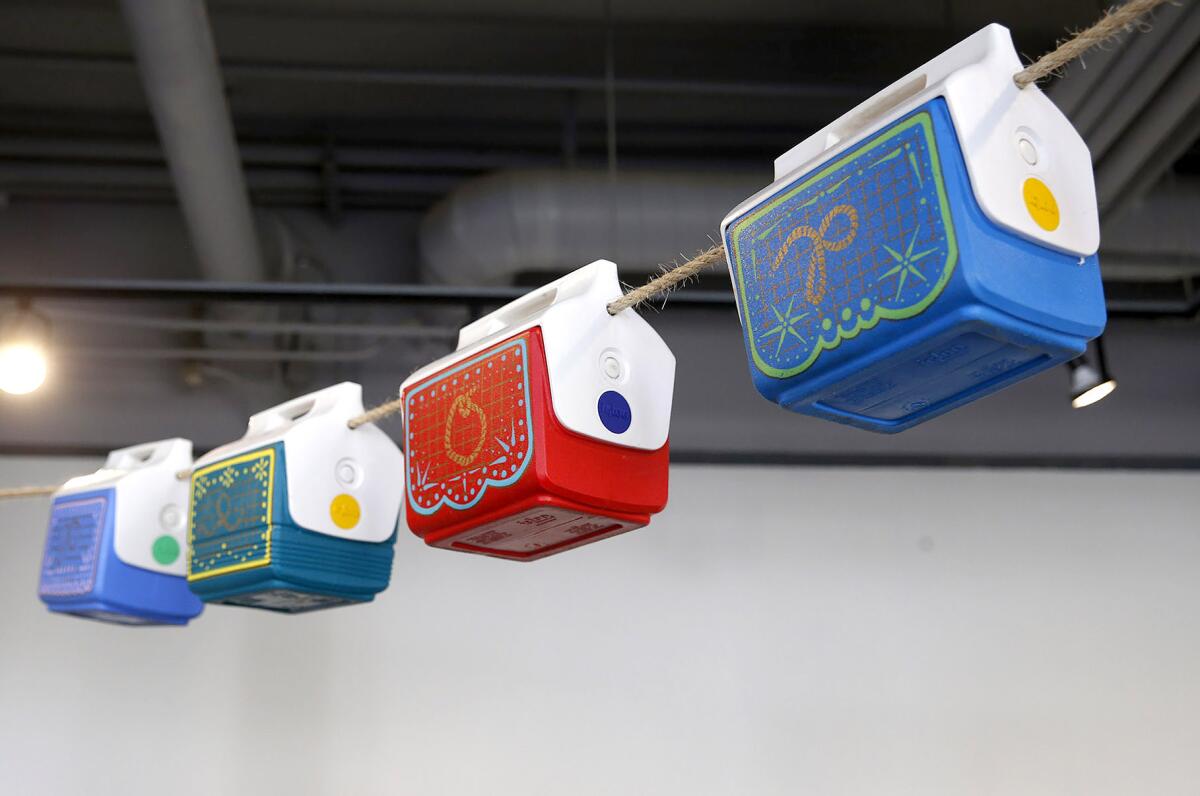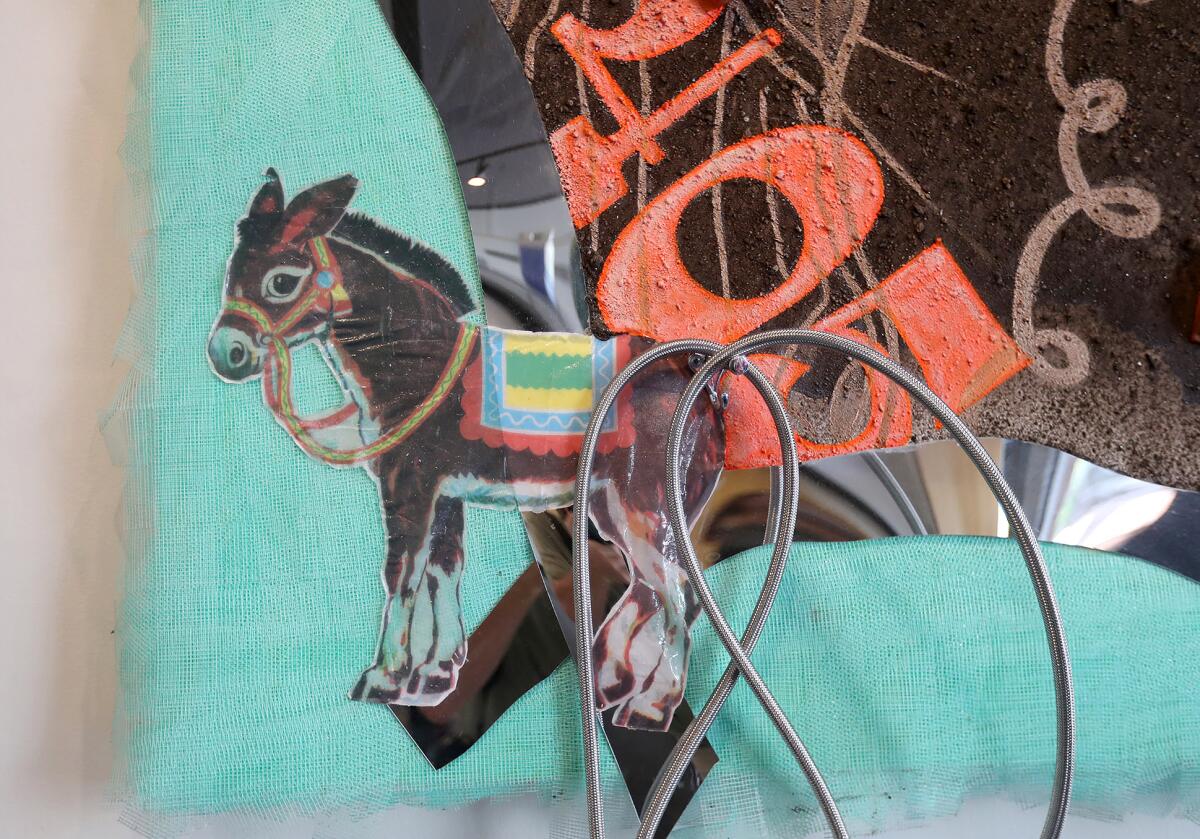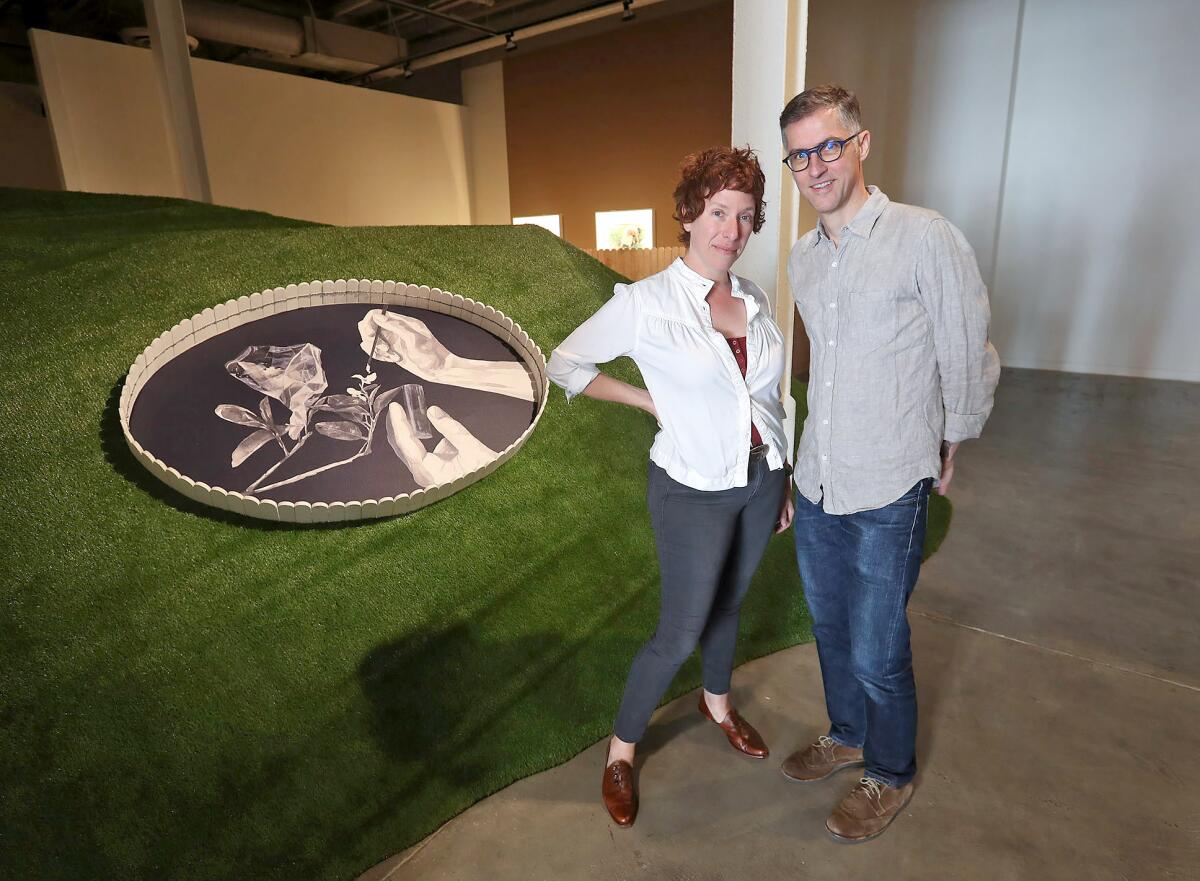‘Se Busca’ and ‘Welcome’ at Grand Central Art Center examine Orange County’s barriers

- Share via
Artist Lorena Ochoa sees their birthplace of Santa Ana as a city that contains multitudes. Ochoa explores those multitudes in their show at the Grand Central Art Center in Santa Ana, “Lorena Ochoa: Se Busca,” which examines the place where memory and transport intersect in their home town.
“This body of work is kind of my love letter to growing up in Santana,” said Ochoa.
Ochoa earned their bachelor’s degree in Visual Arts with a minor in Chicana/o Studies at UCLA and received their master of fine arts at UC San Diego. On the heels of being an artist in residence at the Guapamacataro Hacienda in Michoacan in 2022, Ochoa was selected as one of seven graduating artists from regional art programs to present their work in the Institute of Contemporary Art San Diego’s annual NextGen exhibition.

“Additionally, I am the ICA’s 2023 NextGen Award recipient, which recognizes the artist who received the highest total ranking across an international jury panel,” said Ochoa.
In “Se Busca,” Ochoa uses objects that feel familiar to create a connection to her message, which generates a universal approachability.
“I think Lorena’s work is, first of all, eye-catching, but the message behind it is so perfect for Santa Ana, and I think it really represents the community well,” said GCAC curatorial associate and public programs coordinator, Savannah Lee. “People can walk in and feel a connection.”
“Se Busca” is the first show Lee has curated, and she let the colors of Ochoa’s work dictate the composition of the exhibition.
“In terms of display, Lorena’s work is very vibrant, and I wanted certain colors to be next to each other or opposite each other,” said Lee.
The show’s title refers to the constant searching that can be done within a marginalized community, when survival mode feels like the only mode.
“What happens when you are in a constant state of searching, you have this survival mentality. You only live in the present, and it doesn’t give you the opportunity to pause and plan for the future or set goals.”

A colorful string of Mini Mate coolers for example, titled “La Gente Unida,” stands in for a paper picado banner.
“On one side it says ‘people,’ and on the other side it says ‘profit,’” said Ochoa. “A lot of times Latin Americans are seen for the labor they can provide and not for the people that they are. It’s the symbol of packing your lunch and going to work and doing this labor but also a way to find beauty in the fact that we are so hard working.”
In another corner two over-stuffed suitcases titled “On the Hook” and “Hold & Held” are filled with objects that simultaneously symbolize where one comes from and the trauma migration can cause. Cowboy boots and car parts are jammed in along with a plaster cast of a bolillo wedged next to a virgin statue, wrapped in protective foam but bound with string.
“A lot of the items in these pieces have dual meaning,” Ochoa said.
Ochoa also notes that Santa Ana is bordered by freeways and a river, which can encourage escape but also foster isolation.

“What I found by looking at maps while doing this research is Santana is surrounded by freeways, then the other border is the concreted portion of the Santa Ana River,” said Ochoa, “It is not concreted in other places, but in it’s namesake it effectively creates this square around us.”
In “Se Busca,” Ochoa connects the river their mother lived close to in Michoacan to the Santa Ana River where Ochoa now makes her home.
“The Santa Ana River exits in to the Pacific Ocean, but the ocean current actually goes down to Michoacan where my Mom is from, before it ravels further west,” said Ochoa. “She grew up by a river too, and so these ideas of the water moving and merging together.”
A water-filled LCD barricade makes up the piece “Agua Santa,” adorned with lenticular religious figures and fitted with brass hose bibs.
While bodies of water can signify life and movement, they also create barriers.

“There is this idea of movement that surrounds us with the flowing of river and traffic,” said Ochoa, “but it is also very stagnant.”
Barriers is a theme that carries over to Grand Central Art Center’s concurrent exhibit, “Susy Bielak and Fred Schmalz: Welcome.”
“‘Welcome’ is an installation that is thinking about the limits of ‘welcome,’” said Bielak.
“One of the things that is in the design of the installation is for you to be frustrated in your attempts to get through it,” said Schmalz. “You have to contend with these various barriers and interruptions.”
Bielak and Schmalz’s residency is supported in part by the Andy Warhol Foundation for the Visual Arts and “Welcome” is inspired by four years of site visits, archival research and collaborations with Orange County activists, educators and urban planners. The show examines the ways social structures within our culture can determine who a welcome is extended to and ways that invitation can be rescinded.

“Over the course of our time here in Orange County, we have really found ourselves thinking in a more kind of intersectional way about the way in which control functions spatially,” said Bielak.
Schmalz said that includes everything from plant hybridization to urban development and the designs of streets and cities and neighborhoods and gated communities.
Partially obstructed by a picket fence, paintings of archival photographs tell stories from O.C.’s history that include Japanese Americans who were separated from their land, Vietnamese refugees, the military industrial complex, cheap labor and the fumigation of orange trees.
“We really wanted to uplift and notice and pay attention to histories from this region,” said Bielak.
The show also features an infographic poem “Three Conditional Welcomes,” which borrows from the initial planning documents for UC Irvine designed by a defense contractor. While the piece is made up of circle, it is difficult to discern a center.

“Hybrid,” the exhibition’s largest installation, is centered around a painting of an image that originally appeared in an agriculture-industry magazine that Bielak found herself taken with.
“I was so struck by it and by this idea of hybridization, like how to make the perfect thing,” said Bielak.
The painting of an orange blossom being hybridized is surrounded by a short picket fence on the side of AstroTurf hills.
The show’s sound installations “Never Never” and “Am I an American” feature Valley High School choir students singing a chant the artists derived from a 1970s fair housing protest and a question printed on a 1920s KKK recruitment flier.
“We were working with the choir at Valley High, and we brought them two texts that were complicated for different reasons,” Schmalz said. “We reduced those texts down to a slogan that could be used as a chant.”
For the show’s opening on Oct. 7, Valley High School students and music director, Ammy Beltran, joined Bielak and Schmalz’s artist talk at GCAC for a moving performance.
“Lorena Ochoa: Se Busca” is open through Nov. 12, with Ochoa building a special ofrenda for the Nov. 4 art walk. “Bielak and Fred Schmalz: Welcome” runs through Jan. 14. For more information visit grandcentralartcenter.com.
All the latest on Orange County from Orange County.
Get our free TimesOC newsletter.
You may occasionally receive promotional content from the Daily Pilot.




